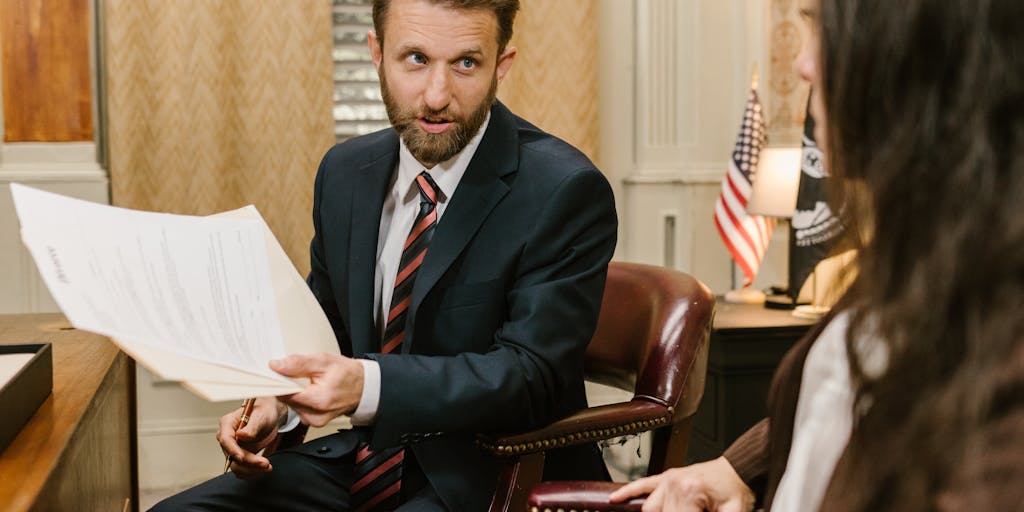When navigating the complexities of child support in California, many parents find themselves asking, “How much will I need to pay or receive for my two kids?” Understanding the financial obligations can be daunting, but it’s crucial for ensuring that your children’s needs are met. Let’s break down the factors that influence child support payments and how you can estimate what to expect.
California Child Support Calculator

One of the most helpful tools at your disposal is the California Child Support Calculator. This online resource allows you to input specific details about your financial situation, including income, expenses, and the number of children involved. By using this calculator, you can get a clearer picture of what your child support obligations might look like.
For instance, if you’re a parent with a stable income but also have significant expenses, the calculator will help you see how these factors balance out. It’s a straightforward way to estimate payments without needing to consult a lawyer immediately. However, remember that the calculator provides estimates, and actual payments may vary based on individual circumstances.
Child support in California
In California, child support is determined based on a formula that considers both parents’ incomes and the amount of time each parent spends with the children. The state aims to ensure that children receive the financial support they need to thrive, regardless of their parents’ relationship status. The formula takes into account:
- Gross Income: This includes wages, bonuses, and any other income sources.
- Time Share: The percentage of time each parent spends with the children can significantly affect the support amount.
- Other Expenses: Childcare costs, health insurance, and educational expenses are also factored in.
For two children, the support amount will typically be higher than for one child, reflecting the increased costs associated with raising multiple kids. According to a study on the average child support payment in California, parents can expect to pay a percentage of their income, which can range from 25% to 50% depending on various factors.
It’s also important to note that child support is not just a financial obligation; it’s a commitment to your children’s well-being. By ensuring that they have the resources they need, you’re investing in their future. If you’re unsure about how to navigate this process, consider reaching out to a family law expert who can provide personalized guidance.
In conclusion, understanding how much child support you might owe or receive for two kids in California involves considering multiple factors, including income, time spent with the children, and additional expenses. Utilizing tools like the child support calculator can help clarify your situation, but always remember that each family’s circumstances are unique. If you have further questions or need assistance, don’t hesitate to seek professional advice.
Factors in the California child support formula
When it comes to determining child support in California, the process can feel overwhelming. However, understanding the key factors involved can help clarify how much support you might expect to pay or receive. The state uses a specific formula that takes into account various elements, ensuring that the needs of the children are prioritized. Let’s dive into the primary factors that influence child support calculations.
Number of eligible children
One of the most significant factors in calculating child support is the number of eligible children. In California, the formula is designed to provide adequate support for each child, which means that the more children involved, the higher the total support amount may be. For instance, if you have two children, the support obligation will typically be greater than if you only had one. This is because the costs associated with raising children—such as food, clothing, education, and healthcare—multiply with each additional child.
To get a clearer picture of what you might expect, you can use the California child support guideline calculator. This tool allows you to input specific details, including the number of children, to estimate the support amount.
Parenting timeshare
Another crucial factor in the child support equation is the parenting timeshare, which refers to the amount of time each parent spends with the children. The more time a parent has physical custody, the less financial support they may need to provide, as they are directly caring for the children during that time. Conversely, if one parent has the children for a significantly lesser amount of time, they may be required to contribute more financially to support the children’s needs.
For example, if one parent has the children 70% of the time, they may receive child support from the other parent to help cover the costs of raising the children during that time. This aspect of the formula is designed to ensure that both parents contribute fairly to the upbringing of their children, regardless of the living arrangements.
Understanding how these factors interplay can help you navigate the complexities of child support. If you’re looking for more insights, you might find it helpful to read about average child support amounts in California or explore the California child support guidelines for a deeper understanding of your obligations and rights.
Parents’ monthly incomes
When it comes to determining child support in California, one of the most critical factors is the parents’ monthly incomes. This calculation isn’t just a simple matter of looking at paychecks; it involves a comprehensive assessment of both parents’ financial situations. You might wonder, how does this work in practice? Well, California uses a formula that considers various income sources, including wages, bonuses, and even rental income. The idea is to ensure that both parents contribute fairly to the upbringing of their children.
For instance, if one parent earns significantly more than the other, the child support obligation will reflect that disparity. This is designed to maintain a standard of living for the children that is as close as possible to what they would have experienced if the parents were still together. If you’re curious about the specifics, you can explore more about the average child support payment in California.
Child support and parenting time examples
Understanding how child support works can be complex, especially when factoring in parenting time. Have you ever thought about how the amount of time each parent spends with the children affects support payments? In California, the amount of time a parent has custody can significantly influence the child support calculation. The more time a parent spends with the children, the less they may need to pay in child support, as they are directly providing for the children during that time.
For example, if one parent has the children for 70% of the time, they may receive child support from the other parent, but the amount will be adjusted based on the parenting time. This ensures that the financial responsibilities are balanced according to the actual care provided. If you’re looking for a practical way to estimate child support obligations, you might find a child support calculator helpful.
Scenario 1
Let’s consider a scenario to illustrate how this all comes together. Imagine Parent A earns $6,000 a month, while Parent B earns $3,000. They have two children together. Based on California’s guidelines, the child support calculation would take into account both parents’ incomes, the number of children, and the amount of time each parent spends with the kids.
In this case, Parent A might be responsible for a larger share of the child support due to their higher income. However, if Parent B has the children for a significant portion of the month, this could reduce the amount Parent A has to pay. It’s a balancing act that aims to ensure both parents contribute to their children’s welfare while also recognizing the time spent with them. If you want to dive deeper into discussions around child support calculations, you can check out this thread on Reddit where people share their experiences and insights.
Scenario 2
Imagine a situation where both parents have relatively equal incomes, but one parent has primary custody of the children. In California, child support calculations take into account the income of both parents, the amount of time each parent spends with the children, and the needs of the children. In this scenario, let’s say Parent A earns $5,000 a month, while Parent B earns $4,000. The child support formula will consider these incomes and the custody arrangement to determine the support amount.
For two children, the guideline might suggest that Parent A pays a percentage of their income to Parent B. This percentage can vary, but typically, it might be around 25% of Parent A’s income for two children. So, in this case, Parent A could be looking at a monthly payment of about $1,250. However, this is just a guideline, and actual payments can vary based on specific circumstances, such as additional expenses for healthcare or education.
It’s essential to remember that these calculations can be complex, and consulting with a family law attorney can provide clarity. If you’re curious about how these calculations work in detail, you might find this Quora discussion helpful.
Scenario 3
Now, let’s consider a different scenario where one parent is a high earner, making $10,000 a month, while the other parent is unemployed. In this case, the court will still look at the needs of the children and the income of the high-earning parent. The unemployed parent may not have a significant income to contribute, which can shift the burden of support onto the higher-earning parent.
In California, the guideline might suggest that the high-earning parent pays a larger percentage of their income, potentially around 30% for two children. This could mean a monthly child support payment of about $3,000. However, the court may also consider the unemployed parent’s ability to find work and may encourage them to seek employment to contribute to the children’s needs.
It’s important to note that child support is not just about the money; it’s about ensuring that the children have a stable and supportive environment. If you’re interested in exploring more about how child support works in different scenarios, check out our article on the best digital marketing podcasts for insights on how to navigate complex situations.
Scenario 4
Lastly, let’s look at a scenario where both parents have fluctuating incomes, such as freelancers or those in commission-based jobs. This can complicate child support calculations, as income may vary significantly from month to month. In California, the courts may average the income over a period to determine a fair support amount.
For instance, if Parent A averages $6,000 a month and Parent B averages $3,500, the court might calculate support based on these averages. If the guideline suggests around 25% for two children, Parent A might pay approximately $1,500 monthly. However, if Parent A has a particularly low month, they might petition the court for a temporary reduction in support.
In these cases, it’s crucial for both parents to maintain open communication and possibly revisit the support agreement as their financial situations change. If you’re navigating similar challenges, consider reading about the best Instagram advertising agencies to find ways to boost your income through social media marketing.
Understanding child support can feel overwhelming, especially when you’re navigating the complexities of family law in California. If you’re a parent with two children, you might be wondering how much you’ll need to pay or receive in child support. Let’s break it down together.
Missed payments

Life can be unpredictable, and sometimes missed child support payments happen. If you find yourself in a situation where payments are missed, it’s crucial to understand the implications. Not only can missed payments lead to financial strain, but they can also affect your legal standing. In California, the law takes missed payments seriously, and there are several consequences that can arise.
For instance, if you’re the receiving parent and payments are missed, you may need to file a motion with the court to enforce the support order. This can involve additional legal fees and stress. On the other hand, if you’re the paying parent, it’s essential to communicate with your ex-partner and the court about any financial difficulties you’re facing. Courts often prefer to work with parents who are proactive about their situations.
Have you ever considered how missed payments can impact your relationship with your children? It’s not just about the money; it’s about the emotional connection and stability that financial support provides. Keeping an open dialogue can help maintain that connection.
Calculating parenting time in Santa Clara County

When it comes to child support, parenting time plays a significant role in determining the amount. In Santa Clara County, the courts use a specific formula to calculate child support based on the amount of time each parent spends with the children. This is often referred to as the “timeshare” percentage.
For example, if you have your children 40% of the time, this will be factored into the child support calculation. The more time you spend with your kids, the less you may need to pay in support, as the courts recognize that you are directly providing for their needs during that time.
Have you thought about how your parenting time affects not just finances but also your relationship with your children? The more involved you are, the stronger your bond can become. It’s a win-win situation!
Calculating your parenting time elsewhere in CA

If you’re outside of Santa Clara County, you might be wondering how parenting time is calculated in other parts of California. The good news is that the general principles remain the same across the state. Each county has its own guidelines, but they typically follow the same formula based on the percentage of time each parent spends with the children.
For instance, if you live in Los Angeles or San Diego, you’ll still need to document your parenting time accurately. This can include keeping a calendar or log of when the children are with you versus when they are with the other parent. This documentation can be crucial if disputes arise or if you need to revisit the child support agreement.
Have you ever thought about how different counties might have unique resources or support systems for parents? Exploring local family law resources can provide you with valuable insights and assistance tailored to your specific situation.
Calculating Child Support Under California Guidelines
When it comes to child support in California, understanding the calculation process can feel overwhelming. But don’t worry; we’re here to break it down for you. The state uses a specific formula to determine how much support a parent should pay, which is based on several factors, including the income of both parents and the needs of the children. This formula is designed to ensure that children receive adequate financial support, regardless of their parents’ relationship status.
To start, the basic formula considers the following:
- Income of both parents: This includes wages, bonuses, and any other sources of income.
- Time spent with each parent: The more time a child spends with a parent, the less that parent may need to pay in support.
- Other expenses: This can include healthcare costs, childcare, and educational expenses.
For two children, the calculations can get a bit more complex. Generally, the support amount is adjusted to reflect the needs of both children, which can lead to a higher total support obligation compared to one child. If you’re curious about the exact figures, you can use the California Child Support Calculator to get an estimate based on your specific situation.
Learn how child support works in California, including how support is calculated, when the amount can be different than the standard calculation, and how to modify the current amount of support you’re paying or receiving.
Child support in California is not a one-size-fits-all situation. While the guidelines provide a baseline, there are circumstances where the amount can differ from the standard calculation. For instance, if one parent has significantly higher expenses related to the children’s needs, such as special education or medical care, the court may adjust the support amount accordingly.
Additionally, if there’s a change in circumstances—like a job loss or a significant increase in income—either parent can request a modification of the support order. This process involves filing a motion with the court, and it’s essential to provide documentation to support your request. It’s always a good idea to consult with a family law attorney to navigate these changes effectively.
Who Pays Child Support in California?
In California, child support is typically paid by the non-custodial parent, which is the parent with whom the children do not primarily reside. However, it’s important to note that both parents have a financial responsibility to support their children, regardless of custody arrangements. This means that even if you share custody equally, one parent may still be required to pay support based on income disparities.
Understanding who pays child support can also depend on the specific circumstances of your family. For example, if one parent earns significantly more than the other, the higher-earning parent may be obligated to pay more in support. This ensures that both parents contribute fairly to the upbringing of their children.
Ultimately, navigating child support can be challenging, but knowing the guidelines and your rights can empower you to make informed decisions. If you’re looking for more insights on related topics, check out our articles on Best YouTube Marketing Agencies or Best Pinterest Marketing Agencies for additional resources that might help you in your journey.
How Child Support Is Calculated in California
Understanding how child support is calculated in California can feel overwhelming, especially if you’re navigating a separation or divorce. The state has specific guidelines that aim to ensure fairness and meet the needs of children. But what does this mean for you and your family? Let’s break it down together.
In California, child support is primarily determined by a formula that considers both parents’ incomes, the amount of time each parent spends with the children, and other relevant factors. This formula is designed to provide a consistent approach to support obligations, ensuring that children receive adequate financial support from both parents.
California’s Formula for Calculating Child Support
The formula used in California is known as the “Dissomaster” formula, which calculates child support based on several key components:
- Income of Both Parents: This includes wages, bonuses, and any other sources of income. The more you earn, the higher your potential child support obligation may be.
- Time Spent with Each Parent: The amount of time each parent spends with the children significantly impacts the calculation. More time with one parent can reduce their child support obligation.
- Other Expenses: Additional costs such as healthcare, childcare, and educational expenses can also be factored into the support calculation.
For example, if one parent earns significantly more than the other and has the children for less time, they may be required to pay more in child support to balance the financial responsibilities. This system aims to ensure that children maintain a similar standard of living in both households.
How to Use California’s Child Support Calculator
One of the most helpful tools for parents is the California Child Support Calculator. This online resource allows you to input your financial information and get an estimate of what your child support payments might look like. Here’s how to use it effectively:
- Gather Financial Information: Before you start, collect all relevant financial documents, including pay stubs, tax returns, and any other income sources.
- Input Your Data: Enter your income, the other parent’s income, and the time each parent spends with the children. The calculator will use this information to provide an estimate.
- Review the Results: While the calculator gives a good estimate, remember that actual child support orders can vary based on additional factors, such as special needs or extraordinary expenses.
Using the calculator can help you prepare for discussions with your co-parent or legal counsel, making the process feel less daunting. It’s a great way to gain clarity on what to expect and how to plan financially for your children’s needs.
In conclusion, understanding child support calculations in California is crucial for ensuring that your children’s needs are met. By familiarizing yourself with the formula and utilizing the child support calculator, you can approach this challenging situation with more confidence and clarity. If you have further questions or need assistance, consider reaching out to a family law professional who can provide tailored advice for your unique circumstances.
What Counts as Income When Calculating Child Support?
When it comes to determining child support in California, understanding what counts as income is crucial. You might be surprised to learn that income isn’t just your salary. It encompasses a variety of sources. For instance, wages, bonuses, commissions, and overtime pay are all considered. But it doesn’t stop there; income can also include self-employment earnings, rental income, and even unemployment benefits.
Imagine a parent who works part-time but also has a side hustle selling handmade crafts online. Both the part-time job income and the earnings from the side business will be factored into the child support calculation. This comprehensive approach ensures that the financial contributions to the child’s upbringing are fair and reflective of the parent’s actual financial situation.
Additionally, investment income, such as dividends or interest, is also included. This means that if you have stocks or bonds generating income, that too will be part of the equation. Understanding these nuances can help you better prepare for discussions about child support and ensure that all relevant income sources are considered.
Adjustments for Low-Income Parents
Life can throw unexpected challenges our way, and for low-income parents, the burden of child support can feel overwhelming. Fortunately, California recognizes this and has provisions in place to adjust child support obligations based on income levels. If you find yourself struggling to make ends meet, it’s essential to know that you can request a modification of your child support order.
For example, if you lose your job or experience a significant decrease in income, you can petition the court for a recalculation. The court will consider your current financial situation, including your ability to pay and the needs of your children. This process is designed to ensure that child support remains fair and manageable, allowing you to provide for your children without sacrificing your own basic needs.
Moreover, California has a guideline formula that takes into account both parents’ incomes and the time each parent spends with the children. This means that if you are a low-income parent who shares custody, your child support obligation may be lower than expected. It’s always a good idea to consult with a legal expert to navigate these adjustments effectively.
When a Parent’s Earning Capacity Is Used to Calculate Child Support
Have you ever heard the term “earning capacity”? In child support calculations, this concept can play a significant role, especially when a parent is underemployed or voluntarily unemployed. The court may look beyond actual income to assess what a parent could potentially earn based on their skills, education, and job market conditions.
For instance, if a parent has a degree in engineering but is currently working in a lower-paying job due to personal choices, the court might determine that they have the capacity to earn a higher income. This assessment can lead to a higher child support obligation, even if the parent isn’t currently making that amount. It’s a way to ensure that children receive the financial support they need, regardless of a parent’s current employment situation.
This approach can sometimes feel unfair, especially if you believe your current job is all you can manage. However, it’s essential to understand that the court’s goal is to prioritize the children’s welfare. If you find yourself in this situation, consider discussing your circumstances with a legal professional who can help you present your case effectively.
How Parenting Time Affects Child Support
Have you ever wondered how the time your children spend with each parent influences the amount of child support? In California, the formula for calculating child support is not just a straightforward number; it intricately weaves in the concept of parenting time. The more time a child spends with one parent, the less financial support that parent may need to provide. This is because child support is designed to cover the costs associated with raising children, and if one parent is providing more direct care, their financial obligations may be adjusted accordingly.
For instance, if you have two kids and you share custody equally, the child support payments might be lower than if one parent has the children most of the time. The state uses a guideline formula that considers both parents’ incomes and the percentage of time each parent spends with the children. This means that if you’re actively involved in your kids’ lives, it could positively impact your financial responsibilities.
Understanding this dynamic can help you navigate the complexities of child support. It’s essential to keep in mind that any changes in parenting time should be documented and communicated to ensure that child support reflects the current situation. If you’re considering a change in custody arrangements, it might be wise to consult with a legal expert to understand how it could affect your financial obligations.
Expenses Added to Child Support
Child support isn’t just about the basic monthly payments; it can also encompass a variety of additional expenses. Have you thought about what costs might be included beyond just food and shelter? In California, the court may consider several factors when determining child support, including healthcare, education, and extracurricular activities.
For example, if your children are involved in sports or music lessons, these expenses can be factored into the child support calculations. Similarly, if one child has special needs that require additional medical care or therapy, those costs can also be included. This means that the total amount of child support can vary significantly based on the specific needs of your children.
It’s crucial to keep an open line of communication with your co-parent about these expenses. Documenting all costs related to the children can help ensure that both parents are on the same page and that the child support amount accurately reflects the financial responsibilities involved in raising them. If you’re unsure about what can be included, seeking advice from a family law attorney can provide clarity and help you navigate these discussions.
Can Child Support Be Different Than the Guideline Amount?
Many people assume that child support must strictly adhere to the guideline amounts set by the state. But did you know that there are circumstances where the child support amount can differ? California law allows for deviations from the guideline amount based on various factors. This flexibility can be beneficial in ensuring that the support amount is fair and appropriate for both parents and the children involved.
For instance, if one parent has significantly higher income or if there are extraordinary expenses related to the children’s needs, the court may adjust the child support amount accordingly. Additionally, if one parent has a lower income or is facing financial hardship, this can also be a valid reason for a deviation. It’s all about ensuring that the child’s best interests are prioritized while also considering the financial realities of both parents.
It’s important to note that any changes to the child support amount should be formally documented and approved by the court. If you believe that your situation warrants a different amount than what the guidelines suggest, it’s advisable to consult with a legal professional who can help you present your case effectively. This way, you can ensure that the child support arrangement is equitable and meets the needs of your family.
Allowed Reasons for Deviating from the Child Support Guideline
When it comes to child support in California, the state has established guidelines to ensure fairness and consistency. However, there are circumstances where deviations from these guidelines are permitted. Have you ever wondered what those circumstances might be? Understanding these exceptions can be crucial for parents navigating the complexities of child support.
Some of the allowed reasons for deviating from the standard child support calculation include:
- Income Variability: If a parent has an irregular income, such as seasonal work or fluctuating commissions, the court may consider this when determining support.
- Extraordinary Expenses: Costs related to a child’s special needs, such as medical expenses or educational requirements, can justify a higher support amount.
- Shared Parenting Time: If parents share custody more equally than the guideline assumes, this can lead to a reduction in the support obligation.
- Other Children: If a parent has additional children from another relationship, this may impact their ability to pay support for the children in question.
These deviations are not arbitrary; they must be backed by evidence and presented in court. It’s essential to document any relevant financial information to support your case. Have you considered how your unique situation might fit into these categories?
Guideline Departures Must Follow California’s Child Support Policies
If you have qualifying factors such as irregular income or shared parenting time, gather supporting documents like pay stubs, tax returns, and custody records to present in court. This can help show how your situation aligns with the California child support guidelines and why a deviation might be warranted.
While deviations from the child support guidelines are allowed, they must adhere to California’s established policies. This means that any departure from the guideline amount must be justified and documented thoroughly. You might be asking, “What does this process look like?”
In California, the court requires that any request for a deviation be accompanied by a detailed explanation. This could involve:
- Filing a Motion: Parents must file a motion with the court to request a deviation, outlining the reasons and providing supporting evidence.
- Financial Documentation: This includes tax returns, pay stubs, and any other relevant financial records that demonstrate the need for a different support amount.
- Legal Representation: It’s often beneficial to have a lawyer who understands child support laws to help navigate this process effectively.
By following these guidelines, parents can ensure that their requests are taken seriously and considered fairly. Have you thought about how you might prepare for such a request?
Can Parents Agree on a Child Support Amount?
Absolutely! In many cases, parents can come to an agreement on child support without needing to go through the court system. This can be a more amicable and less stressful approach. But how does this work in practice?
When parents agree on a child support amount, it’s essential that the agreement is in the best interest of the child. Here are some key points to consider:
- Mutual Agreement: Both parents should discuss and agree on the amount, taking into account their financial situations and the needs of the children.
- Written Agreement: It’s advisable to put the agreement in writing and have it reviewed by a legal professional to ensure it meets legal standards.
- Court Approval: While parents can agree on an amount, it’s often necessary to have the agreement approved by the court to make it enforceable.
By reaching an agreement, parents can maintain a cooperative relationship, which is beneficial for the children involved. Have you considered how open communication might help in reaching a fair agreement?
How to Apply for Child Support
Applying for child support in California can feel overwhelming, but understanding the process can make it much easier. The first step is to gather all necessary documentation, including proof of income, expenses, and any existing custody agreements. You’ll need to fill out the appropriate forms, which can be found on the California Department of Child Support Services (DCSS) website.
Once you have your forms ready, you can submit them either online or in person at your local child support agency. It’s important to provide accurate information, as this will affect the amount of support determined. After your application is submitted, a caseworker will review your information and may schedule a hearing to finalize the support order.
Have you ever wondered how long this process takes? Typically, it can take several weeks to months, depending on the complexity of your case and the court’s schedule. Staying organized and responsive to any requests from the agency can help speed things along.
How to Collect Child Support
Once child support is established, the next step is ensuring you receive those payments consistently. In California, child support payments can be collected through various methods, including direct deposit, wage garnishment, or through the DCSS. If the non-custodial parent is employed, the court may order their employer to withhold a portion of their paycheck to ensure timely payments.
If you find yourself struggling to collect payments, it’s crucial to know your options. You can contact your local child support agency for assistance, which may include enforcement actions like intercepting tax refunds or suspending the non-custodial parent’s driver’s license. It’s essential to keep records of all payments received and any missed payments, as this documentation can be vital if you need to take further action.
Have you ever faced challenges in receiving child support? Many parents do, and it’s important to remember that you’re not alone. Seeking support from local resources or legal advice can provide you with the tools you need to navigate these challenges effectively.
How to Modify Child Support in California
Life changes, and sometimes that means needing to modify child support agreements. Whether it’s due to a change in income, job loss, or changes in the child’s needs, California law allows for modifications to be made. To initiate this process, you’ll need to file a request for modification with the court.
Gathering evidence to support your request is crucial. This might include pay stubs, tax returns, or documentation of any new expenses related to your children. Once your request is filed, a hearing will be scheduled where both parents can present their case. It’s important to be prepared and articulate your reasons clearly.
Have you ever thought about how changes in your life can impact your child support obligations? It’s a common concern, and understanding the modification process can help alleviate some of that stress. Remember, the goal is to ensure that the support amount reflects the current circumstances of both parents and the needs of the children.
What Is the Average Child Support Payment in California?
When it comes to child support in California, many parents wonder what the average payment looks like, especially if they have two children. The state uses a formula that considers various factors, including the income of both parents, the amount of time each parent spends with the children, and any special needs the children may have. This formula aims to ensure that children receive adequate financial support from both parents, regardless of their living arrangements.
On average, child support payments can vary significantly. For two children, the typical monthly payment might range from $1,000 to $2,500, depending on the parents’ combined income and other factors. For instance, if one parent earns significantly more than the other, the higher earner may be required to pay a larger share. This is designed to maintain a standard of living for the children that is as close as possible to what they would have experienced if the parents were still together.
It’s also important to note that California has guidelines that help determine these payments. The California Department of Child Support Services provides resources and calculators to help parents estimate their obligations. Understanding these guidelines can empower you to navigate the child support process more effectively.
How Long Does Child Support Last in California?
Have you ever wondered how long you might be responsible for paying child support? In California, child support typically lasts until the child turns 18 years old. However, if the child is still in high school at that age, support may continue until they graduate or turn 19, whichever comes first. This means that if you have two children, you could be looking at a significant financial commitment for several years.
Additionally, there are circumstances where child support can extend beyond the age of 18. For example, if a child has special needs or disabilities, support may continue indefinitely. It’s crucial to stay informed about these regulations, as they can impact your financial planning and obligations.
Many parents find it helpful to consult with a family law attorney to understand their rights and responsibilities fully. This can be especially beneficial if there are changes in circumstances, such as job loss or a significant change in income, which may warrant a modification of the support order.
Other Resources and Help With Child Support
Navigating child support can feel overwhelming, but you’re not alone. There are numerous resources available to help you understand your obligations and rights. For instance, the California Department of Child Support Services offers a wealth of information, including how to apply for child support services, how to modify existing orders, and even how to enforce payments if necessary.
Additionally, local family law clinics and legal aid organizations can provide assistance, especially for those who may not be able to afford private legal counsel. These resources can guide you through the complexities of child support, ensuring that you are well-informed and prepared to advocate for your children’s needs.
Remember, understanding child support is not just about meeting financial obligations; it’s about ensuring that your children have the support they need to thrive. By utilizing available resources and seeking help when needed, you can navigate this challenging aspect of parenting with confidence.
When navigating the complexities of child support in California, especially for two children, it’s essential to understand how the system operates. The amount of child support can significantly impact both parents and children, shaping their financial stability and quality of life. So, how does child support work in California, and what factors influence the amount you might expect to pay or receive?
How Does Child Support Work in California?
Child support in California is determined based on a formula that considers several factors, including the income of both parents, the amount of time each parent spends with the children, and any special needs the children may have. The state uses a guideline formula that aims to ensure that children receive the financial support they need to thrive.
For two children, the calculations can become a bit more complex. Generally, the formula takes into account:
- Income of Both Parents: The gross income of both parents is considered, including wages, bonuses, and other sources of income.
- Time Spent with Each Parent: The more time a child spends with a parent, the less that parent may need to pay in support.
- Other Expenses: This includes health insurance costs, childcare expenses, and any extraordinary expenses related to the children.
For example, if Parent A earns $5,000 a month and Parent B earns $3,000, the formula will calculate the support based on these incomes, adjusted for the time each parent spends with the children. It’s important to note that the state has a minimum support amount, but many families find that their actual needs exceed this baseline.
Can a Lawyer Help Me Negotiate Different Child Support Payments?
Absolutely! Engaging a lawyer can be a game-changer when it comes to negotiating child support payments. A skilled attorney can help you understand your rights and obligations, ensuring that the support amount is fair and reflective of your financial situation. They can also assist in gathering the necessary documentation to support your case, which can be crucial in negotiations.
Moreover, if circumstances change—like a job loss or a significant increase in income—having a lawyer can help you navigate the process of modifying child support. They can advocate on your behalf, making sure that any adjustments are in the best interest of your children while also considering your financial capabilities.
It’s worth noting that many parents worry about the costs associated with hiring a lawyer. However, the investment can often lead to better outcomes, potentially saving you money in the long run. If you’re considering legal assistance, you might want to explore options like best live chat for lawyer websites to find the right fit for your needs.
What Are a Father’s Rights in California for Child Support?
Fathers in California have the same rights as mothers when it comes to child support. This means that if you are a father, you have the right to seek fair support arrangements that reflect your financial situation and parenting time. It’s crucial to understand that child support is not just a financial obligation; it’s also about ensuring that your children have the resources they need to thrive.
Fathers can also request modifications to child support if their circumstances change. For instance, if you take on more parenting responsibilities or experience a change in income, you can petition the court for a reassessment of your support obligations. This is where having a knowledgeable attorney can be particularly beneficial, as they can guide you through the legal process and help you present your case effectively.
Ultimately, understanding your rights and responsibilities as a father can empower you to make informed decisions that benefit both you and your children. If you’re looking for more insights on related topics, consider checking out articles like Best Amazon Marketing Agencies or Best Twitter Marketing Agencies for additional resources.
How Does California Determine Child Support?
Understanding how child support is determined in California can feel overwhelming, but it’s essential for parents navigating this process. The state uses a formula that considers several factors to ensure that the financial needs of the children are met. At the heart of this calculation are the parents’ incomes, the amount of time each parent spends with the children, and any additional expenses related to the children, such as healthcare and education.
California employs a guideline formula, which is designed to provide a fair and consistent approach. The formula takes into account:
- Gross Income: This includes wages, bonuses, and any other income sources.
- Time Share: The percentage of time each parent spends with the children significantly impacts the support amount.
- Additional Expenses: Costs for childcare, health insurance, and other necessary expenses are factored in.
For example, if one parent earns significantly more than the other, the support payment will likely reflect that disparity, ensuring that both parents contribute to the children’s upbringing. It’s also worth noting that parents can agree on a different amount, but any agreement must be approved by the court to ensure it serves the children’s best interests.
What Is the Average Child Support Payment for One Child in California?
When it comes to child support, many parents wonder what the average payment looks like. In California, the average child support payment for one child typically ranges from $400 to $800 per month. However, this amount can vary widely based on individual circumstances.
For instance, if you have two children, the support amount will generally be higher, as the formula accounts for the needs of both children. It’s important to remember that these figures are averages; your specific situation may lead to a different amount. Factors such as the parents’ income levels, the children’s needs, and the custody arrangement all play a crucial role in determining the final support payment.
Many parents find it helpful to use online calculators to get a rough estimate of what they might expect to pay or receive. These tools can provide a starting point, but consulting with a family law attorney can offer more personalized guidance.
At What Age Does a Parent Stop Paying Child Support in California?
As children grow, the question of when child support payments cease often arises. In California, child support typically continues until the child turns 18 years old. However, if the child is still in high school at that age, support may continue until they graduate or turn 19, whichever comes first.
It’s essential to keep in mind that circumstances can change. For example, if a child becomes emancipated before reaching these ages, the obligation to pay child support may end sooner. Emancipation can occur through various means, such as marriage or joining the military.
Additionally, if there are significant changes in either parent’s financial situation, it may be possible to modify the child support order. This could be due to job loss, a substantial increase in income, or changes in custody arrangements. Staying informed about these factors can help you navigate the complexities of child support more effectively.
When navigating the complexities of child support in California, many parents find themselves asking, “How much will I need to pay or receive for my children?” Understanding the nuances of child support can feel overwhelming, but it’s essential for ensuring the well-being of your kids. Let’s dive into some common questions that arise regarding child support, particularly for two children.
Common Questions About Child Support in California
Child support is a critical aspect of co-parenting, and it’s natural to have questions about how it works. Here, we’ll address some of the most frequently asked questions to help clarify the process and expectations.
Q: What Is the Average Child Support Payment for One Child in California?
The average child support payment for one child in California can vary significantly based on several factors, including the parents’ income, the amount of time each parent spends with the child, and any special needs the child may have. Generally, the guideline formula suggests that the non-custodial parent pays around 25% of their net income for one child. For two children, this percentage typically increases to about 40% of the non-custodial parent’s net income.
For example, if a parent earns $5,000 per month after taxes, the expected child support payment for one child would be approximately $1,250. For two children, this could rise to around $2,000. However, these figures can fluctuate based on individual circumstances, so it’s crucial to consult with a legal expert or use the California Child Support Calculator for a more tailored estimate.
Q: How Do They Calculate Child Support in California?
Calculating child support in California involves a formula that considers various factors. The primary elements include:
- Income of Both Parents: The court looks at the gross income of both parents, which includes wages, bonuses, and other sources of income.
- Time Spent with Each Parent: The amount of time each parent spends with the children can influence the support amount. More time with one parent may reduce the support obligation of the other.
- Other Expenses: Additional costs such as healthcare, childcare, and educational expenses are also factored into the calculation.
California uses a specific formula known as the “guideline formula,” which is designed to ensure that child support payments are fair and consistent. You can find more detailed information about this process in resources like best Google Adwords advertising agencies that provide insights into legal matters.
It’s important to remember that while the formula provides a baseline, judges have discretion to adjust payments based on unique circumstances. For instance, if one parent has significantly higher expenses or if the children have special needs, the court may modify the support amount accordingly.
Understanding these calculations can empower you to advocate for your children’s needs effectively. If you’re feeling uncertain about the process, consider reaching out to a family law attorney who can guide you through the intricacies of child support in California.
Q: Is Child Support High in California?
When it comes to child support, many parents in California often wonder if the amounts are considered high compared to other states. The answer can be quite nuanced. California uses a specific formula to determine child support obligations, which takes into account various factors such as the income of both parents, the amount of time each parent spends with the children, and any special needs the children may have.
For two children, the support amount can indeed feel substantial, especially for parents who are already managing tight budgets. The state’s guidelines are designed to ensure that children receive adequate financial support, but this can lead to concerns about affordability for the paying parent. It’s essential to understand that while the calculations may seem high, they are based on the principle that both parents should contribute to their children’s upbringing, regardless of their living arrangements.
Many parents find themselves asking, “How can I manage my finances while ensuring my kids are well taken care of?” This is a common concern, and it’s important to explore options such as mediation or legal advice to navigate these waters effectively.
California Child Support Calculations are Changing in September 2024
As of September 2024, California will implement changes to its child support calculation guidelines. This shift is significant and aims to reflect the evolving economic landscape and the financial realities faced by families today. The new guidelines will consider factors such as the cost of living, inflation, and the actual expenses incurred in raising children.
For parents, this means that the amount of child support could either increase or decrease, depending on individual circumstances. If you’re currently paying or receiving child support, it’s crucial to stay informed about these changes. You might be wondering, “Will this affect my current agreement?” The answer is that it could, especially if your financial situation or the needs of your children have changed.
Staying proactive and consulting with a family law attorney can help you understand how these changes might impact your situation. It’s always better to be prepared and informed, ensuring that you can advocate for your rights and responsibilities effectively.
Guideline Calculator
One of the most useful tools for parents navigating child support in California is the Guideline Calculator. This online resource allows you to input your financial information and get an estimate of what your child support obligations might be. It’s a great starting point for understanding how much you might owe or receive.
Using the calculator can also help you visualize the impact of different scenarios, such as changes in income or custody arrangements. For instance, if you’re considering a job change or a shift in your parenting schedule, seeing how these factors play out in the calculator can provide clarity and assist in planning.
Many parents find that having a clear picture of potential child support amounts helps them feel more in control of their financial situation. It’s a practical step that can lead to more informed discussions with your co-parent or legal counsel.
CALCULATE CHILD SUPPORT
When it comes to calculating child support for two kids in California, the process can seem daunting. However, understanding the basic formula can help you navigate this important financial obligation. California uses a guideline formula that considers both parents’ incomes, the amount of time each parent spends with the children, and other factors like healthcare costs and childcare expenses.
To get a rough estimate, you can use the California Child Support Calculator, which is available online. This tool allows you to input your income, the other parent’s income, and other relevant details to generate an estimated support amount. For example, if one parent earns significantly more than the other, the support amount will reflect that disparity, ensuring that both parents contribute fairly to the children’s upbringing.
It’s essential to remember that while the calculator provides a good starting point, the final amount can vary based on specific circumstances. Factors such as special needs of the children or extraordinary expenses can influence the final decision. If you’re looking for a more tailored approach, consulting with a family law attorney can provide clarity and guidance.
What Is Child Support?
Child support is a legal obligation that one parent pays to the other to help cover the costs of raising their children after a separation or divorce. It’s not just about financial support; it’s about ensuring that children have the resources they need to thrive. This includes expenses for food, clothing, education, and healthcare.
In California, child support is determined based on a formula that takes into account both parents’ incomes and the amount of time each parent spends with the children. This means that if you have two kids, the support amount will be calculated to ensure that both children receive adequate support. The goal is to maintain a standard of living for the children that is as close as possible to what they would have experienced if their parents were still together.
Many parents wonder if child support is tax-deductible or taxable. In California, child support payments are not tax-deductible for the paying parent, nor are they considered taxable income for the receiving parent. This is an important aspect to consider when planning your finances.
How Is Child Support Decided?
Deciding on child support can be a complex process, influenced by various factors. The primary consideration is the income of both parents. California uses a formula that calculates the basic support obligation based on the parents’ gross incomes. But it doesn’t stop there; the court also considers the percentage of time each parent spends with the children, which can significantly affect the final amount.
For instance, if one parent has the children for a larger portion of the time, they may receive a higher amount of support. Additionally, the court may take into account other expenses such as health insurance premiums, childcare costs, and any special needs the children may have. This holistic approach ensures that the support amount is fair and meets the children’s needs.
It’s also worth noting that child support agreements can be modified over time. If there are significant changes in either parent’s financial situation or the needs of the children, either parent can request a review of the support order. This flexibility is crucial as it allows for adjustments that reflect current realities.
Ultimately, while the guidelines provide a framework, the unique circumstances of each family play a significant role in determining the final child support amount. If you’re navigating this process, consider seeking advice from professionals who specialize in family law to ensure that your rights and your children’s needs are adequately represented.
When navigating the complexities of child support in California, especially for two children, it’s essential to understand the various factors that influence the amount you may be required to pay or receive. Child support is not just a number; it’s a crucial aspect of ensuring that children have the resources they need to thrive. So, what exactly determines how much child support you might be looking at?
Factors Affecting Child Support Payments
Child support payments can vary significantly based on several key factors. Understanding these can help you anticipate what to expect in your situation.
- Income of Both Parents: The most significant factor is the income of both parents. California uses a formula that considers each parent’s income to determine the support amount. If one parent earns significantly more than the other, this will likely affect the support calculations.
- Number of Children: Naturally, the number of children involved plays a role. For two children, the support amount will typically be higher than for one child, but it may not double. The formula accounts for the shared expenses and needs of both children.
- Custody Arrangements: The custody arrangement can also impact child support. If one parent has primary custody, the other may be required to pay more to support the children’s living expenses. Conversely, if custody is shared, the support may be adjusted accordingly.
- Healthcare and Childcare Costs: Additional expenses such as healthcare, childcare, and educational costs are also factored into the support calculations. If one parent is responsible for these expenses, it can influence the overall support amount.
- Special Needs: If either child has special needs, this can significantly affect the support amount. Additional resources may be necessary to ensure that the child receives appropriate care and support.
It’s important to remember that these factors can vary widely from case to case. Engaging with a legal expert can provide clarity tailored to your specific situation.
How Is Child Support Calculated for Multiple Children
Calculating child support for two children in California involves a specific formula that takes into account the factors mentioned above. But how does this formula work in practice?
The California Child Support Guideline uses a mathematical formula that considers both parents’ incomes, the percentage of time each parent spends with the children, and other relevant expenses. For example, if Parent A earns $5,000 a month and Parent B earns $3,000, the guideline will calculate the support based on these incomes, adjusting for the number of children.
Interestingly, the formula does not simply double the support amount for one child. Instead, it recognizes that some costs are shared, which can lead to a lower per-child support amount. This means that while you might expect to pay more for two children, the increase may not be as significant as you think.
Additionally, the court may consider any extraordinary expenses, such as private school tuition or medical costs, which can further influence the final amount. It’s crucial to document all expenses and be prepared to discuss them during negotiations or court proceedings.
For those looking for more insights into marketing strategies that can help support your financial situation, you might find articles like Best Snapchat Marketing Agencies or Best Facebook Advertising Agencies useful.
Ultimately, understanding how child support is calculated can empower you to make informed decisions and advocate for your children’s best interests. If you’re facing a child support situation, consider consulting with a family law attorney who can guide you through the process and help ensure that your children’s needs are met.











 Network with anybody you can get in front of. This includes fellow attorneys for sure, but also expands beyond your colleagues.
Network with anybody you can get in front of. This includes fellow attorneys for sure, but also expands beyond your colleagues.







